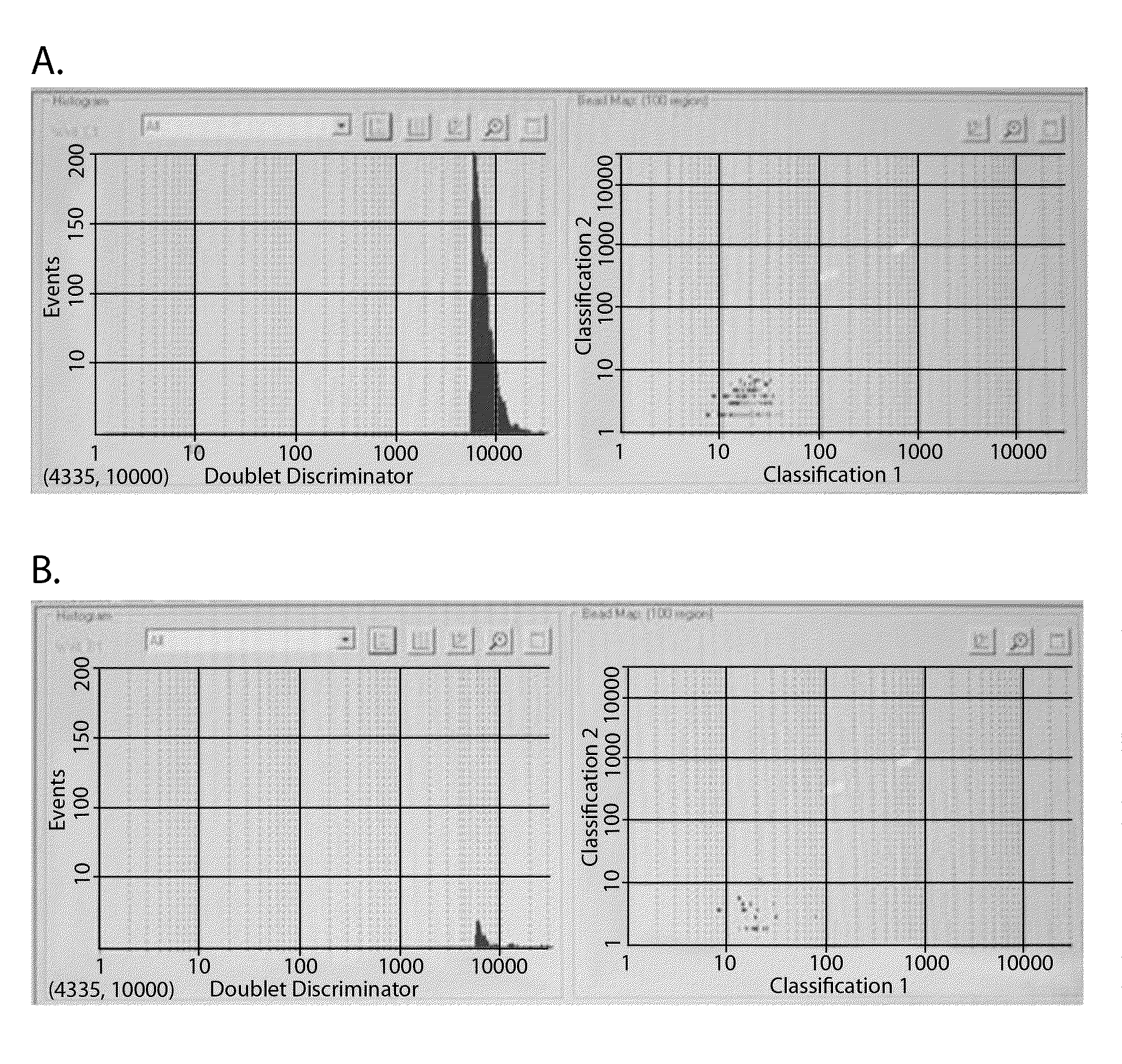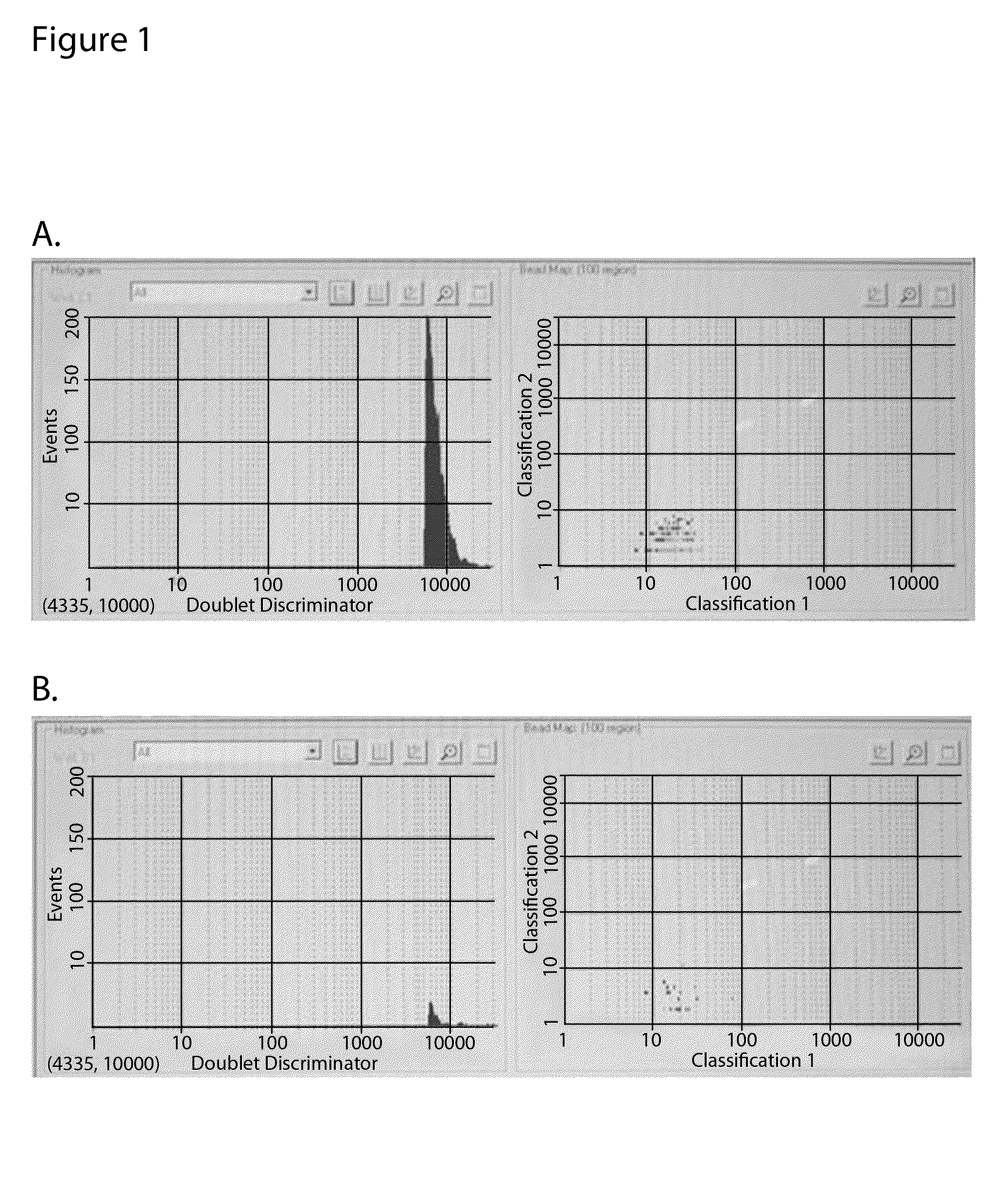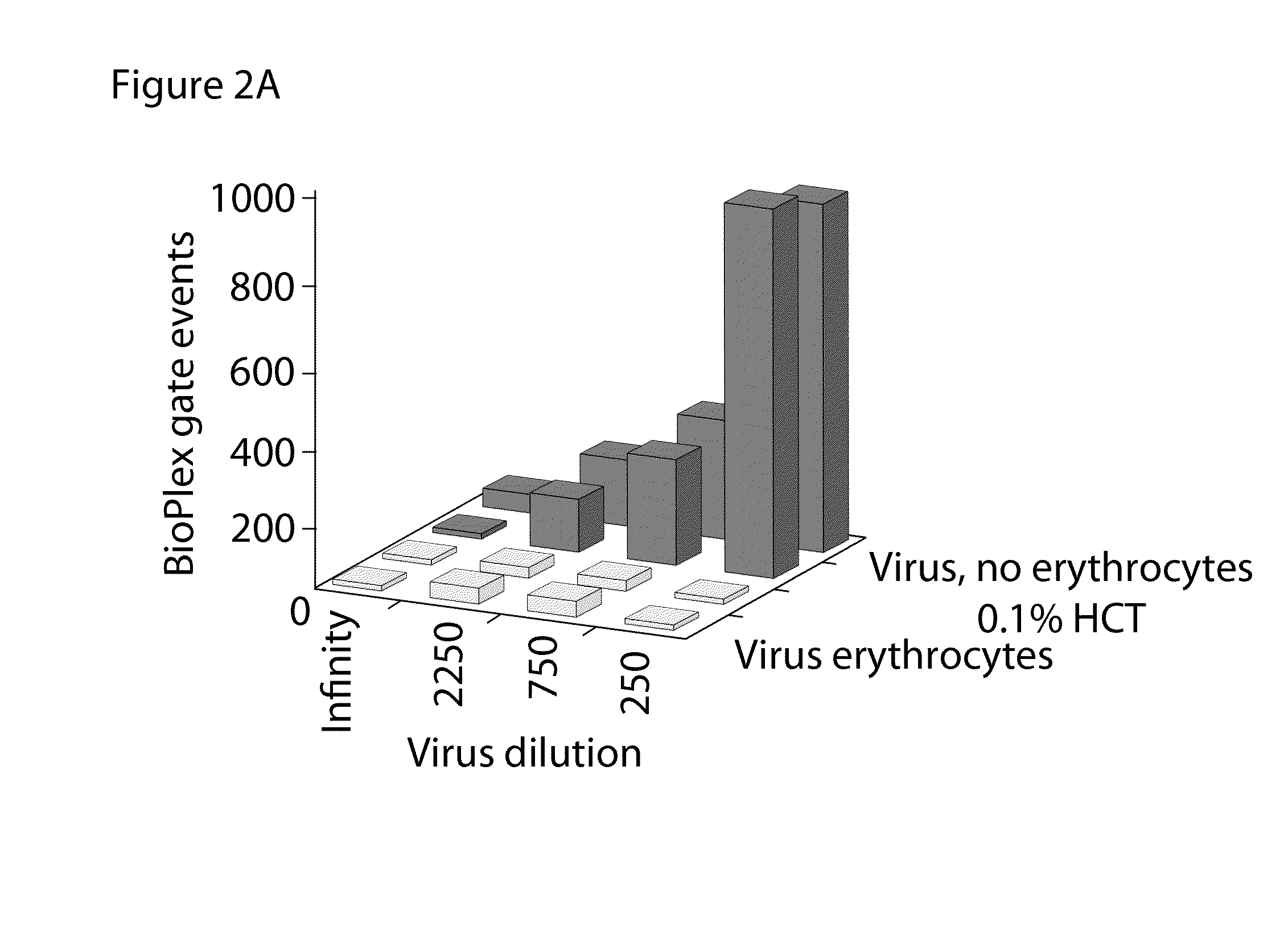Bead Array Reader Based-Hemagglutination and Hemagglutination Inhibition Assay
a technology of hemagglutination and inhibition assay, which is applied in the field of beads array readers based on hemagglutination and hemagglutination inhibition assay, can solve the problems of lack of adequate sensitivity of hai assay in the cases of some conditions, interference of hemagglutinin molecules with the binding between virus particles, etc., and achieves the effect of increasing the sensitivity of said assay
- Summary
- Abstract
- Description
- Claims
- Application Information
AI Technical Summary
Benefits of technology
Problems solved by technology
Method used
Image
Examples
example 1
Using a Bead Array Reader for the Detection of Hemagglutination
[0066]Human group O erythrocytes were separated from fresh blood. Erythrocytes were washed three times in Dulbecco PBS buffer from lymphocytes and plasma using centrifugation, then washed twice with complete RPMI media containing 1% PSG additive (centrifugation at 350 g, room temperature), and resuspended in the same media at 10% hematocrit (HCT). The erythrocyte suspension was stored in 0.5-mL aliquots at 4° C. Human anti-influenza sera were obtained from donors participating in the 2007-2008 influenza screening program and collected at the Florida Blood Center. Sera samples were sealed and kept at 4° C. for short-term storage or at −80° C. for long-term storage. H1N1 Solomon Islands BPL-inactivated influenza virus was obtained from the US Centers for Disease Control and Prevention (CDC), Atlanta, Ga. Bovine serum albumin, heat shock-separated, low endotoxin, was obtained from Sigma-Aldrich (Cat. #A9430). Chicken ovalbu...
example 2
Nature of the Light Scattering Objects Detected a Bead Array Reader in Human Erythrocytes Mixed with Virus
[0072]The samples used in the experiment shown in FIG. 1 were examined with a hemacytometer. Erythrocytes cultured without virus were largely dispersed, with a small number of doublets and triplets (FIG. 3A). On the other hand, in the presence of the H1N1 Solomon Islands influenza virus, the erythrocytes quickly formed significant clusters (FIG. 3B), the latter being an expected manifestation of hemagglutination at the reduced concentration of erythrocytes.
[0073]However, the appearance of these large clusters failed to explain the results of the experiment in all details. Indeed, the shapes of the light scattering diagrams, with and without the presence of the virus, were similar (FIGS. 1A and 1B, panels on right) while the sample without virus (erythrocytes only) showed no large clusters at all. When the sample containing the erythrocytes and virus was pushed through a thin cap...
example 3
Development of Bead Array Reader-Based HAI and HA Assays
[0075]Experimental conditions, the protocol and typical results of a typical BP HAI assay are shown in FIG. 4. The concentration of erythrocytes was ˜6.3×106 cells / mL, corresponding to ˜0.1% hematocrit (HCT) before mixing with virus and sera. The dilution of the virus was adjusted to 1 to 320, to compare with 1 to 40 used for the same virus in the conventional HAI.
[0076]Human sera were initially diluted to the titer of the last HAI data obtained in a conventional HAI assay performed earlier (for a suitable protocol, see WHO Manual on Animal Influenza Diagnosis and Surveillance, WHO / CDS / CSR / NCS2002.5 Rev. 1). For the example shown in FIG. 4, the HAI titer obtained with the conventional HAI assay was 1250. Thus, before testing in the BP-HAI, the serum was pre-diluted 1 to 1250. Subsequently, samples of the pre-diluted sera were further sub-diluted 5, 15, and 45 times, to provide a range of dilutions of about one log.
[0077]After t...
PUM
 Login to View More
Login to View More Abstract
Description
Claims
Application Information
 Login to View More
Login to View More - R&D
- Intellectual Property
- Life Sciences
- Materials
- Tech Scout
- Unparalleled Data Quality
- Higher Quality Content
- 60% Fewer Hallucinations
Browse by: Latest US Patents, China's latest patents, Technical Efficacy Thesaurus, Application Domain, Technology Topic, Popular Technical Reports.
© 2025 PatSnap. All rights reserved.Legal|Privacy policy|Modern Slavery Act Transparency Statement|Sitemap|About US| Contact US: help@patsnap.com



